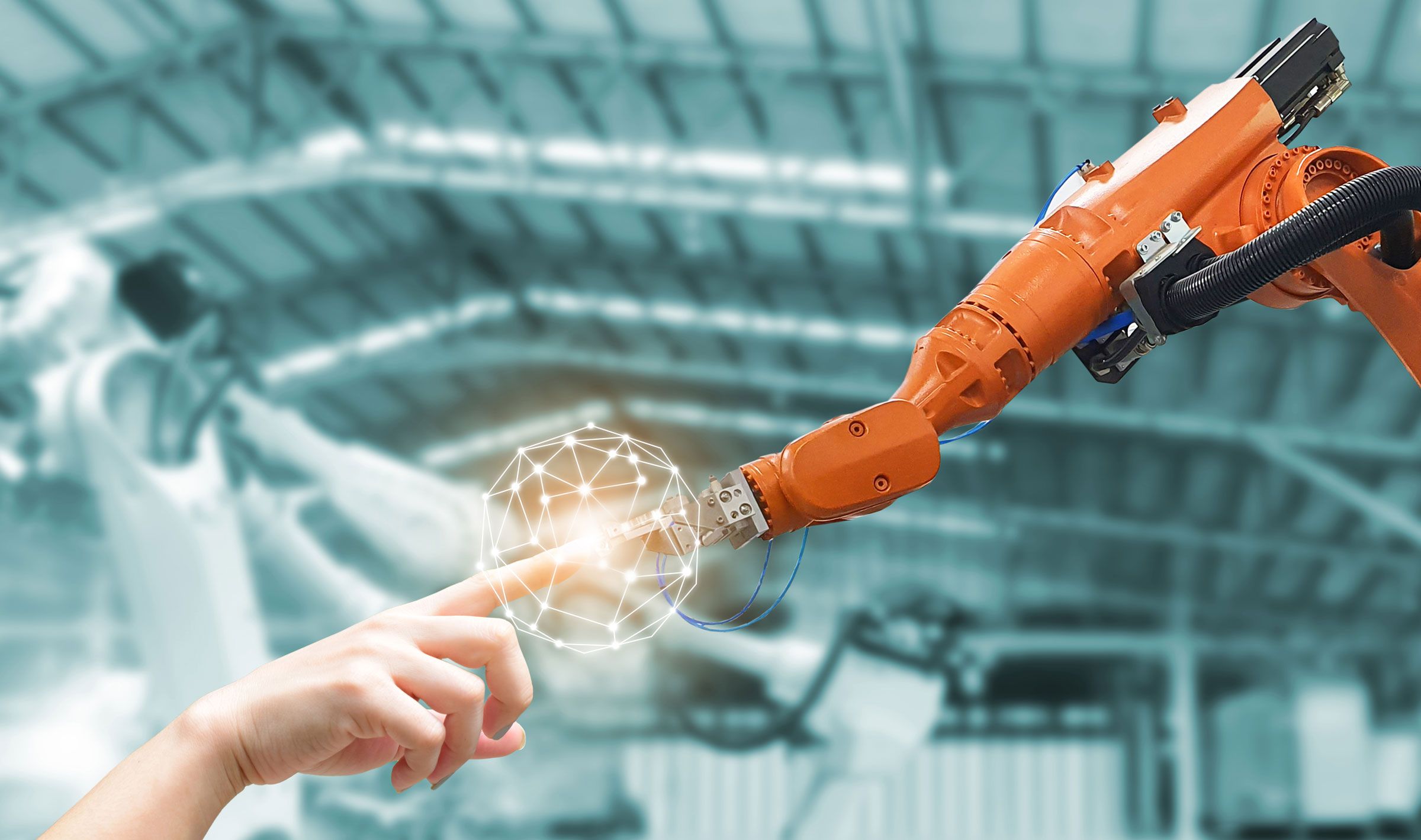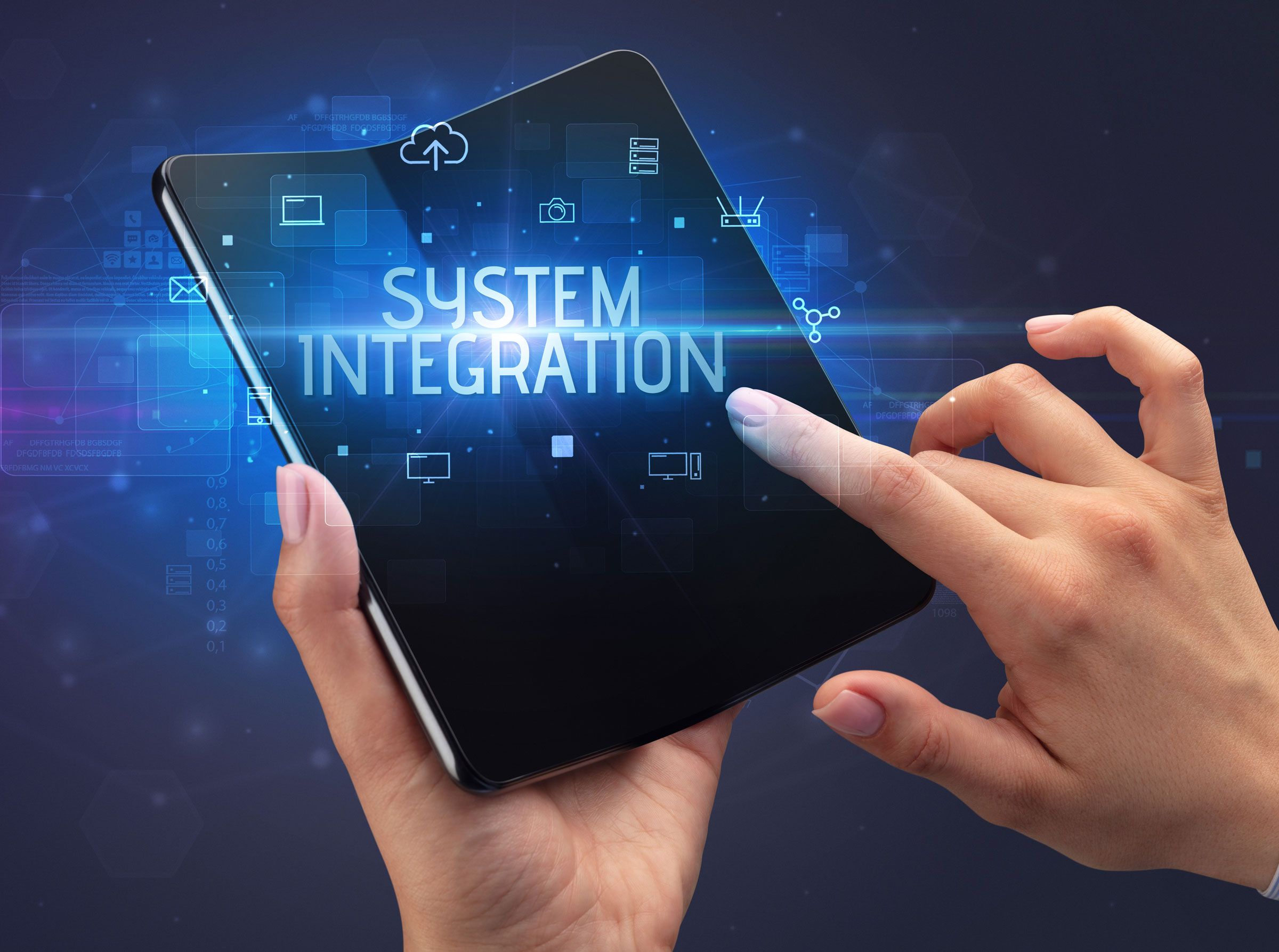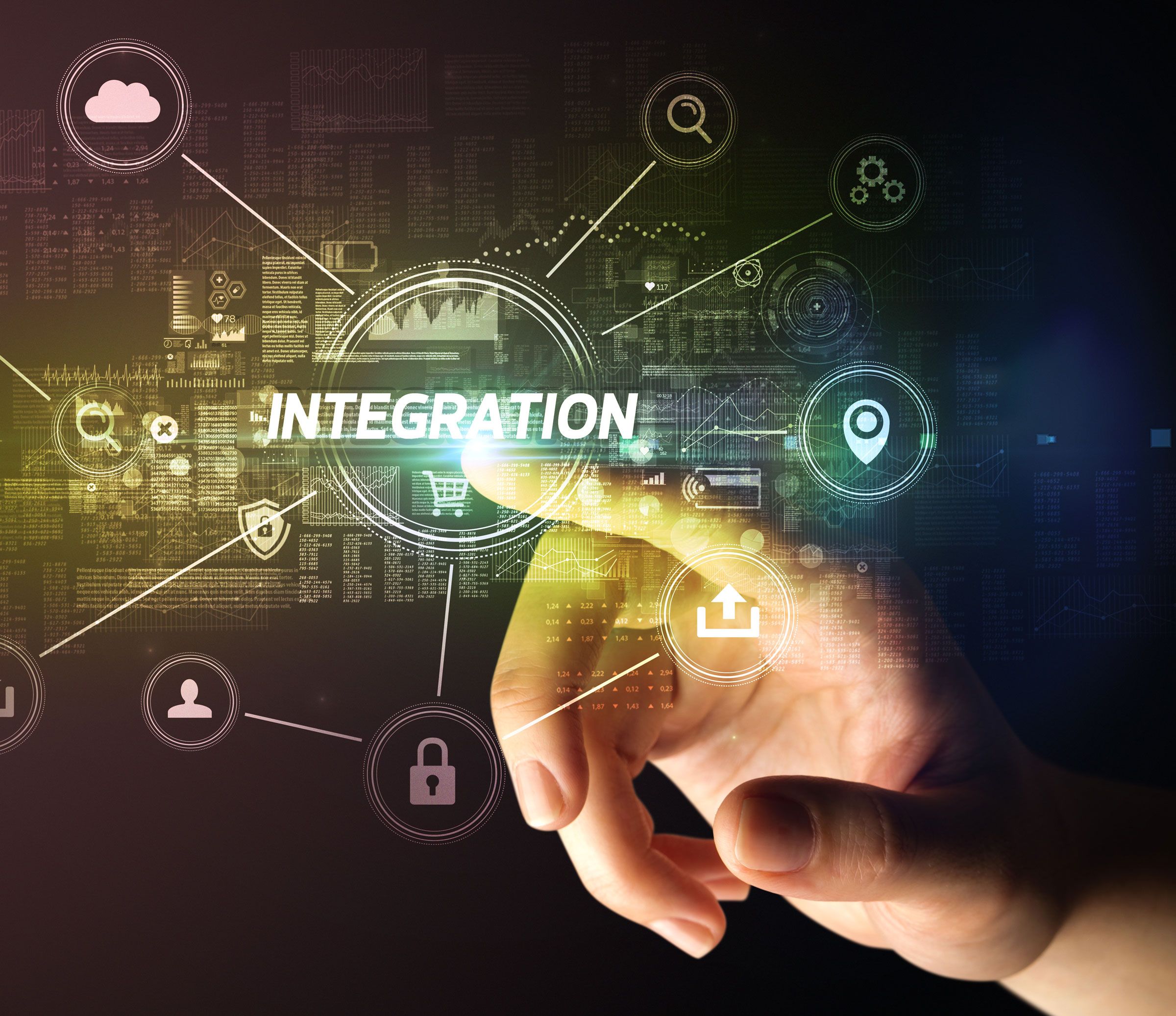
Many industrial manufacturing companies are moving more of their industrial operations into automation — and as they do, systems integration is becoming increasingly more complex. Industrial manufacturers are incorporating more automation and robotics into production lines to increase production output and reduce labor, as well as to control energy usage and plant maintenance costs. Companies are seeking ways to increase communications across all of their manufacturing systems and manage many aspects of their diverse processes.
These manufacturers are overlaying predictive maintenance sensors and systems to ensure less downtime — in many instances adding software, machines and data tools from different suppliers. This increases complexity as users work to integrate disparate data system technology that was designed to be distinct data processing systems and normally do not exchange data or interact with other computer data processing systems.
In this issue of EVERYTHING UNDER CONTROL, c3controls will provide an overview of some of the new advancements in technology affecting the Systems Integrator Industry. We will touch on automation and robotics applications and discuss some of the software available that help to make the integration of new equipment successful.

Systems Integrators and New Technology Trends for the Industry
A systems integrator (SI) is an individual or a business that creates computing systems by combining software and hardware components from multiple vendors to fulfill the needs of their clients. In cloud computing (SaaS, PaaS, IaaS), a cloud integrator works like an SI — which is a service that helps their client negotiate the difficulties of cloud migration.
The systems integration industry manages the deployment-to-operation life cycle of complex IT solutions — providing a service which enables manufacturing processes and software to communicate in various markets, such as oil and gas, automotive, aerospace and defense, healthcare, chemical and petrochemical, power generation, and more.
Key Structures for System Integration
With so many software and hardware components coexisting on the factory floor and in the cloud, it’s important to understand the architectural approaches used to connect it all. Whether integrating a handful of applications or pulling together sprawling legacy and modern systems, the structure you choose can affect everything from ease of management to long-term scalability. Here’s a quick overview of the primary integration types used in modern industry:
Point-to-Point Integration
This straightforward approach connects one system or application directly to another. It’s often the first solution organizations adopt—say, syncing a web form directly to a CRM like Salesforce. While fast to implement, point-to-point can quickly become tangled as more systems and connections are added. Think of it as building one-off bridges between distant islands; simple, but not sustainable for large ecosystems.
Vertical Integration
Vertical integration links multiple applications in a chain, typically reflecting a complete workflow from start to finish. For example, a customer purchase might flow from an e-commerce platform to the sales team, and then to shipping and production. This approach consolidates discrete processes into a streamlined pipeline, simplifying control—but each “vertical stack” usually operates independently from others.
Star Integration
Often thought of as “spoke-to-spoke” connections, star integration organizes multiple applications around central points of contact. Picture logistics, CRM, and order management each feeding into—and sometimes communicating through—a central hub. It’s more versatile than point-to-point, but can devolve into chaos (“spaghetti integration”) if not carefully managed, as redundant or overlapping connections multiply.
Horizontal (Hub-and-Spoke) Integration
For organizations seeking maximum control and simplicity, the hub-and-spoke model is popular. Here, a single platform (the “hub”) connects and orchestrates all other applications (the “spokes”). For example, deploying a major ERP suite, such as SAP or Microsoft Dynamics, as the command center, with inventory, finance, and analytics tools radiating outward from there. The result is a streamlined system with one main interface for integration management, making scaling up or modifying workflows much easier.
By understanding these integration structures, manufacturers and integrators can make informed decisions that reduce complexity, lower maintenance costs, and ensure their operations remain agile as technologies evolve.
New Online Services Offer Valuable Tools for Systems Integration
While manufacturers are demanding more complex integration capabilities, the following online services will make systems integrators’ jobs easier.

- Hypervisor (hypervisor, also known as a virtual machine monitor or VMM) is software that creates and runs virtual machines as guests within the cloud operational system. A hypervisor allows one host computer to support multiple guest virtual machines by sharing its resources, such as memory and processing — and can support large numbers of virtual machines with the ability to scale services up and down according to varying requirements.
- Platform as a Service (PaaS) is a category of cloud computing services that allows customers to provision, instantiate, run and manage a modular bundle comprising a computing platform and one or more applications. This can be accomplished without the complexity of building and maintaining the infrastructure typically associated with developing and launching the application(s) — and to allow developers to create, develop and package such software bundles.
- Software as a Service (SaaS) is a software distribution and licensing and delivery model in which software is licensed on a subscription basis and is centrally hosted. SaaS is sometimes referred to as “on-demand software.” A service provider gives customers access through the internet to applications that are developed and owned by the provider. This service allows each user to access programs via the internet instead of having to install the software on the user’s computer. Using SaaS gives users a greater degree of control and knowledge over their project and results in a more efficient and accurate system.
- Infrastructure as a Service (IaaS) is cloud computing services that allow companies to lease servers for computing and storage in the cloud. Users can run any application or operating system on these servers without any additional operating costs. The servers can provide high-level APIs (Application Programming Interface) that are used to dereference various low-level details of underlying network infrastructure like physical computing resources, location, data partitioning, scaling, security, backup, etc.
- The Internet of Things (IoT) solutions market is one that holds many opportunities for systems integrators because of their expertise in navigating the complex range of products and technology choices available in the market today. IoT solutions can guide companies through complex integrations into existing manufacturing systems that can add increased production capabilities and profitability to their clients’ businesses. They can also assist in the concept, design and management of the deployment-to-operation life cycle of a new complex manufacturing solution.
- Flexible Manufacturing System (FMS) is a production method that has existed for many years and is now becoming new again. With today’s digital technology designed to easily adapt to changes in the type and quantity of the product being manufactured, machines and computerized systems can be configured to manufacture a variety of parts and handle changing levels of production. An FMS can improve efficiency and reduce labor, lowering a company’s production cost — and can be a key component of a make-to-order strategy that allows customers to customize the products they want.
- Remote access to plant management is a growing need in the industrial marketplace. With the onset of the coronavirus outbreak, industrial organizations around the globe are working to keep their employees and communities safe and healthy. They are also contending with the full range of effects to the economy, as well as to their supply chains and operations. With the loss of human assets due to the pandemic crisis and a workforce retiring, it has become clear that the concept of having everyone on-site is evolving.
A remote access operations strategy plays a crucial role in running complex manufacturing plants and relies on a modern automation infrastructure. Plant personnel can remotely manage daily production, maintenance, safety, technical services, training and more, as well as make improvements across multiple sites on numerous different devices. They can also track production targets, monitor asset health and even create scenarios to determine the effect of operational changes prior to implementation.
Key Types of Integrated Systems: Application, Data, and Electronic Document Integration
As these new online services expand the possibilities for systems integration, it's important to understand the core types of integration that manufacturers and systems integrators are working with:
Application Integration
Application integration is the process of connecting diverse enterprise software applications so they can work together seamlessly. This integration is essential for streamlining workflows and automating business processes, allowing data to flow between applications without manual intervention. For example, linking a CRM system like Salesforce with an auto-dialer can boost sales productivity, while integrating ERP systems (such as SAP) with financial software can help streamline operations and reporting.
Why it matters: Application integration reduces the need for employees to switch between different programs or manually transfer data, increasing productivity and centralizing management. The end result is less error-prone processes and a more coordinated operation across departments.
Data Integration
Data integration brings together information from multiple sources, providing a unified view of organizational data. For instance, syncing marketing data from platforms like LinkedIn, Facebook, and Instagram into a tool like HubSpot enables comprehensive customer engagement insights. By consolidating data into warehouses or lakes, companies can break down silos and make informed, timely decisions.
Why it matters: A unified data set is crucial for accurate analytics and strategic decision-making. Without integration, departments may operate on outdated or incomplete information, leading to inefficiencies and missed opportunities.
Real-time benefits: Modern systems increasingly support real-time data syncing, ensuring that all teams are working with the latest information. This is vital for areas like inventory management, customer service, and marketing automation.
Electronic Document Integration (EDI)
Electronic Document Integration (EDI) focuses on the automated exchange of business documents between systems, often between different companies. Sending a purchase order directly from your system to a vendor’s inventory management platform is a classic example. EDI supports standardized formats (such as XML or EDIFACT) to ensure compatibility between different software platforms.
Why it matters: EDI automates routine document transfers, reducing manual errors and improving both speed and security. It’s especially important in sectors like healthcare and finance, where confidentiality and accuracy are paramount. EDI is widely used in procurement, supply chain management, and ongoing vendor relationships.
Bringing together these online services and integration approaches allows manufacturers to not only automate, but to truly optimize their operations. By leveraging advances in application, data, and electronic document integration, alongside robust cloud solutions and IoT deployments, systems integrators can deliver smarter, more resilient, and future-ready manufacturing systems.
Real-Time Data Syncing: Keeping Business Operations in Lockstep
One big benefit for systems integrators is real-time data syncing. This means that information is automatically updated across all connected platforms and devices right away—no delays, no outdated info, and no duplicate records to worry about.
This is especially important for businesses that handle things like customer service or supply chains. For example, if inventory changes in one system, that update instantly appears in sales and purchasing systems too. This helps avoid running out of stock or over-ordering. Customer information also stays up to date across marketing, orders, and support, so teams don’t make mistakes when talking to clients.
The best part? It helps people make better decisions, faster. With the most accurate and current data available, managers can adjust plans, improve operations, and respond to changes immediately, instead of waiting for end-of-day updates or weekly reports. As more business happens online, real-time syncing helps keep everything working smoothly and in sync.
Advanced Systems Integration has Improved Efficiency for Data Privacy, Human Resource Processes and Functional Safety

- Data privacy continues to be in demand across industries, but now there is an increased focus on stronger provisions for the security of company information. The two go hand-in-hand — and the difference is essentially just a shift in emphasis. Hackers are never far behind industry data protection developments, so companies are now investing more in maintaining as much protection as possible from cybercriminals.
- HR functionalities have long since gone into the cloud, with many applications available. Payroll has mostly continued on it’s own, but this is now changing as well. Payroll functionalities are increasingly being integrated into HR platforms via a variety of connective interfaces. This logical progression has been a long time coming, but it is only recently that the right platforms and security features have been put in place to make it more feasible.
- Functional safety (FS) covers the implementation of safety-device related services to mitigate risks associated with manufacturing equipment and processes. This is always a concern for companies with complex manufacturing procedures, so they are increasingly including FS in their integrated systems. Machine safety systems have always been available, but they have evolved a great deal in the past decade. They are far more sophisticated, using components such as sensors and logic controls to better satisfy production demands and be remotely monitored.
Electronic Machine Controls for Over Four Decades
We are proud to have played an integral part in the operation and control of the many different types of automation and robotic manufacturing systems for the Systems Integration Industry.
We hope you have benefited from our latest issue of EVERYTHING UNDER CONTROL and have learned something you may not have known before. In future issues, we will provide you with information on the latest trends and advancements for a wide variety of industries that depend on c3controls products as an integral part of their machine controls.
ISO 9001:2015
Certified
17+ Million Product
Configurations
Lifetime
Warranty
Guaranteed
Same-Day Shipping
Advantage Pricing
Save Up To 40%
c3controls Headquarters, USA
664 State Avenue
Beaver, PA 15009
